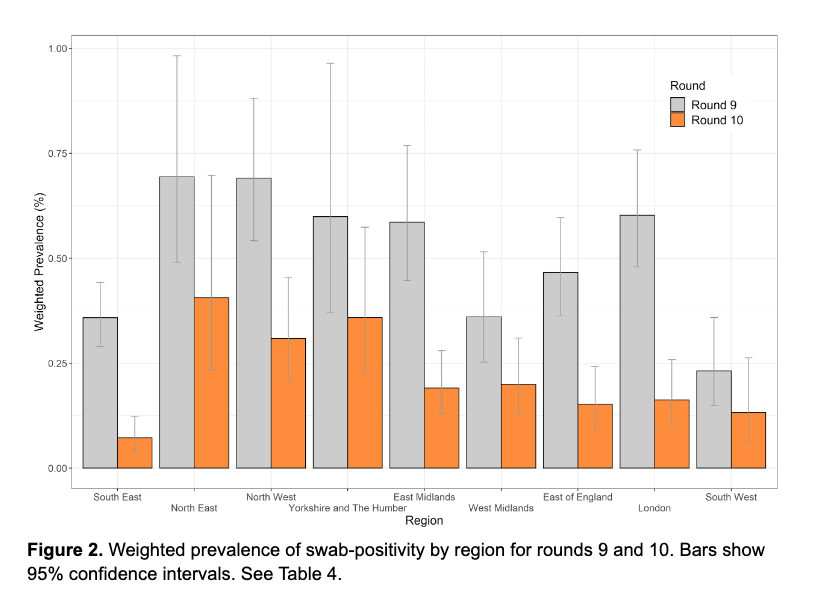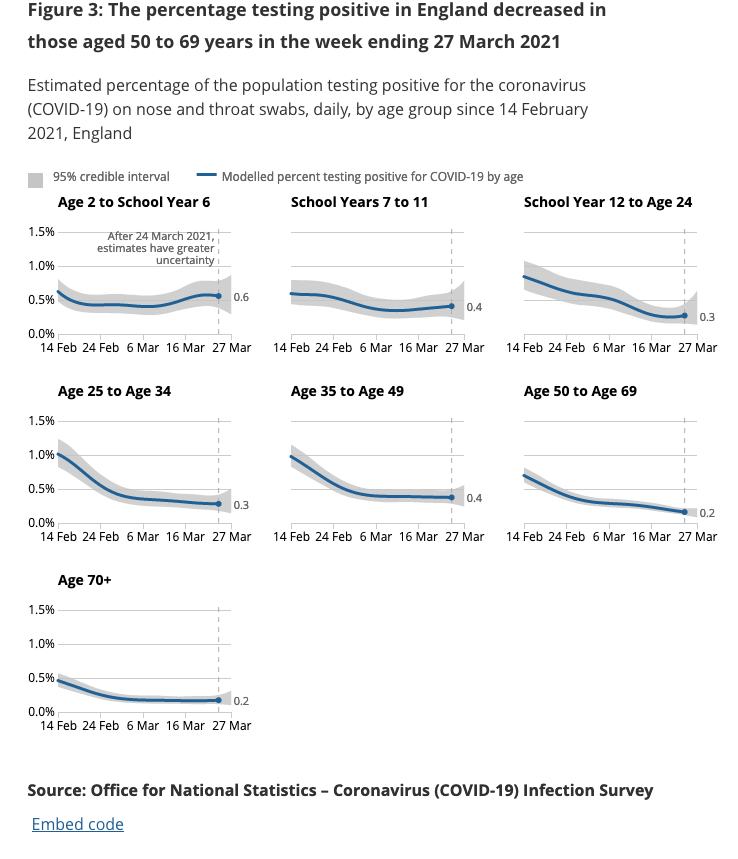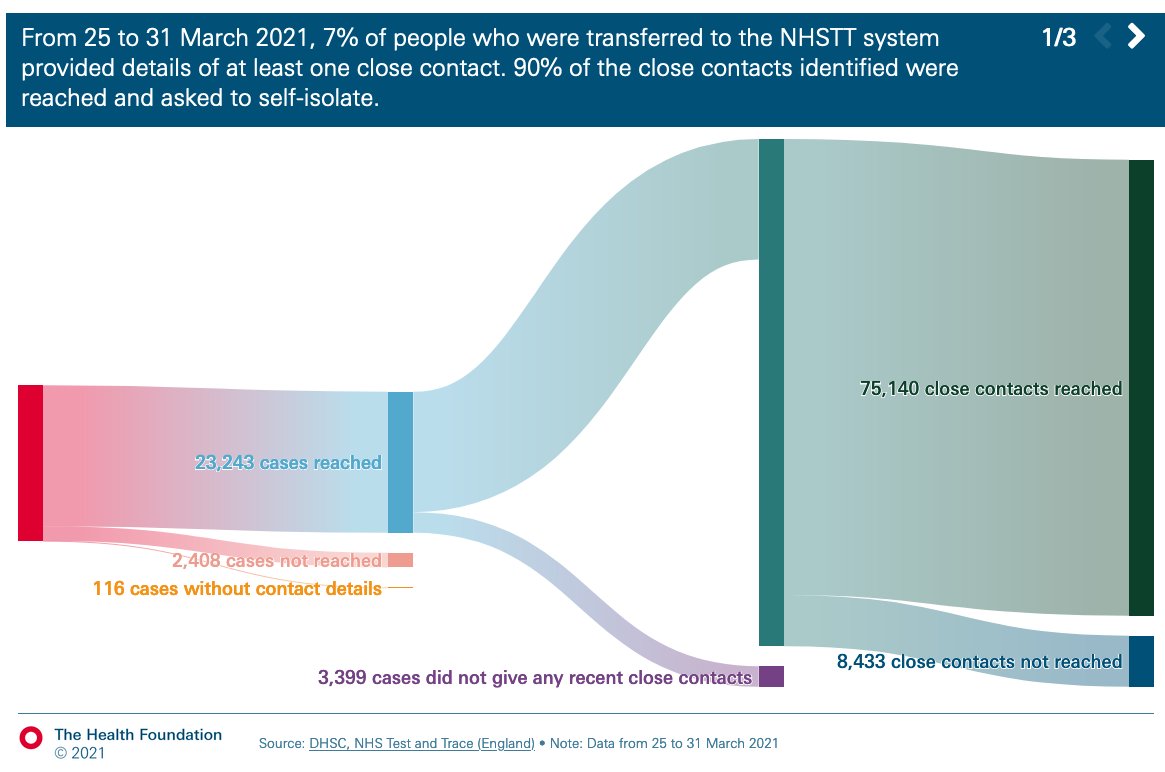
Latest update from REACT-1.
Looks 11-30 March (schools fully reopened on 8th March).
- Suggests infection rates fell by around 60% between Feb and March to 0.2%
- Big differences by age, region, and deprivation
- R now estimated at approx 1.
imperial.ac.uk/news/218993/co…
Looks 11-30 March (schools fully reopened on 8th March).
- Suggests infection rates fell by around 60% between Feb and March to 0.2%
- Big differences by age, region, and deprivation
- R now estimated at approx 1.
imperial.ac.uk/news/218993/co…

Falls across all regions but highest rates still in NE, NW, and Yorkshire and Humber (round 9 is swabs from 4th-23rd Feb, round 10 is 11th-30th March)
Includes 12% probability R>1 for Y&H between two rounds. <1% in all other regions.
This is consistent with ONS survey data.


Includes 12% probability R>1 for Y&H between two rounds. <1% in all other regions.
This is consistent with ONS survey data.



Highest infection rates among 5-12y/o (as does ONS), but REACT suggests lower infection rates among school age children than ONS does. 



And finally, over twice as likely to be infected if live in most vs least deprived parts of the country (see bottom of table) 

• • •
Missing some Tweet in this thread? You can try to
force a refresh

























